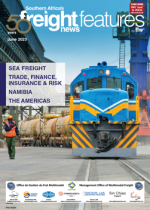Talk behind the scenes in Namibia’s freight sector points to the potential threat that Angola’s Lobito Corridor to the Democratic Republic of the Congo (DRC) poses to the Port of Walvis Bay – but there’s a much bigger picture than just hinterland logistics to the copper mines of the Congo.According to Anton Pretorius, Group CEO of Logistics Support Services, Namibia’s energy sector prospects have the potential to propel the country’s f lagging economy substantially beyond current revenue levels.It should, however, be noted that the benefit from such development starts small and increases exponentially over time as local skills, logistics and supply chains mature.“It is definitely not a quick fix, he said.”The work that multinational energy companies like Shell, and TotalEnergies and others are busy with along the coast of Namibia bares every sign of proceeding from the initial exploration and appraisal phase to progressively move towards possibly making a final investment decision (FID) over the next year or two.“This would then be the start of the exciting development phase,” Pretorius said.And although the technical and financial feasibility studies is a drawn-out process, the development phase could add another five years to that timeline before production starts to f low.It is this FID development, coupled with the eventual production, that could transform Namibia’s GDP.“Considering only Total for the moment, bear in mind that 50% of their entire global exploration budget is currently going to Namibia, and they wouldn’t be doing that if they didn’t have high expectations for the discovery,” Pretorius said.Shell has also added additional resources to expedite the exploration and appraisal phase of their discovery. “So yes, oil and gas development has a fairly long timeline but when it finally comes on stream, it has the potential to grow Namibia’s GDP by up to 30%.“The sector could possibly generate income to the fiscus which is equal to the total current value of income streams to the fiscus.” In February Total’s CEO, Patrick Pouyanné, said the company was “at the helm of a new golden block”, and had “decided to mobilise two rigs and $300 million” for exploratory work along Namibia’s southern coast.To put it all into context, Pretorius said revenue from oil and gas could enable Namibia to roll out capital expenditure (capex) projects currently not within the country’s fiscal means.The oil and gas sector, together with other initiatives, could be the catalyst to proceed with the North Port development between Walvis Bay and Long Beach as a bulk cargo facility. Pretorius added that the Kudu gas field project between Lüderitz and Namibia’s border with South Africa forms part of the larger picture to establish baseload power generation capacity that could reduce the risk of load shedding fall-out from neighbouring to page 25

